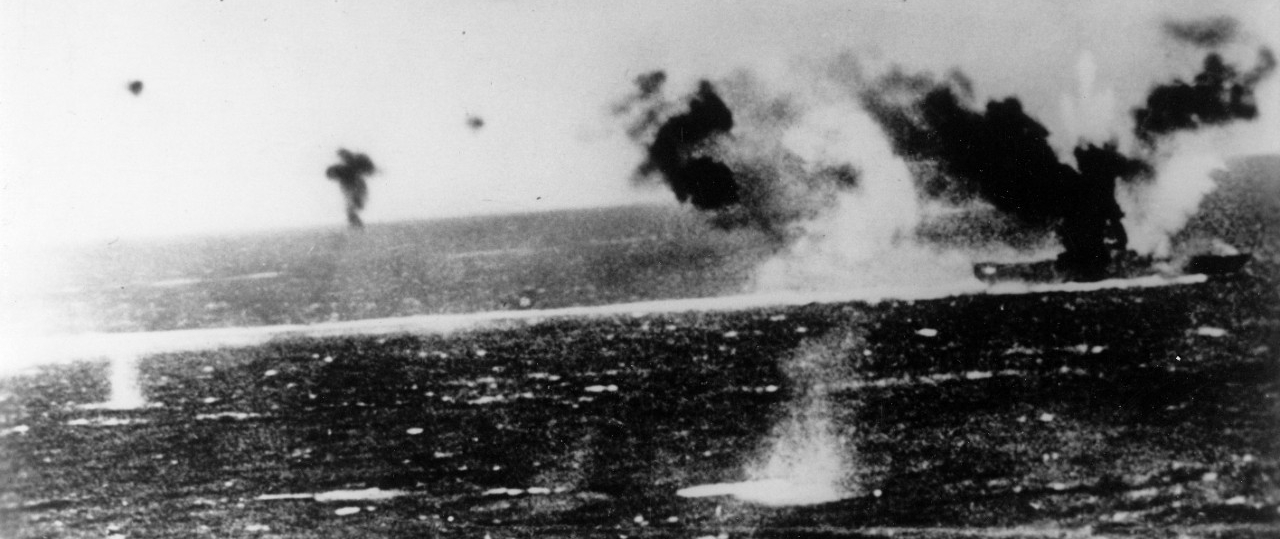
Coral Sea: Japanese Attacks on Lexington
While the American carrier planes were en route to attack the Japanese, some seventy of the latter's aircraft were flying the other way. USS Lexington spotted them on radar just before 1100 and both she and Yorktown increased speed and launched more defending fighters. The Japanese caught the large and relatively unmaneuverable Lexington in a converging "anvil" attack and planted two torpedoes on her port side, one amidships and one forward. The enemy dive bombers struck virtually simultaneously, hitting Lexington with two bombs, one on the port side of the flight deck and one in the island, and added several damaging near misses.
Despite her damage, and the loss of many lives, Lexington soon corrected a seven degree list and resumed flight operations. However, deep inside her hull, gasoline fumes were making their way through the forward part of the ship. At 1247, a big explosion set fires and gravely impared internal communications. Even so, the carrier steamed at 25 knots, while continuing to land her planes.
However, her crew was fighting a losing damage control battle. After two more hours, another explosion caused more internal havoc. Lexington's problems were now out of control. She suspended flight operations and asked for help from other ships. By 1630, she was forced to secure her engines. Shortly after 5 PM, her crew was ordered to abandon ship.


